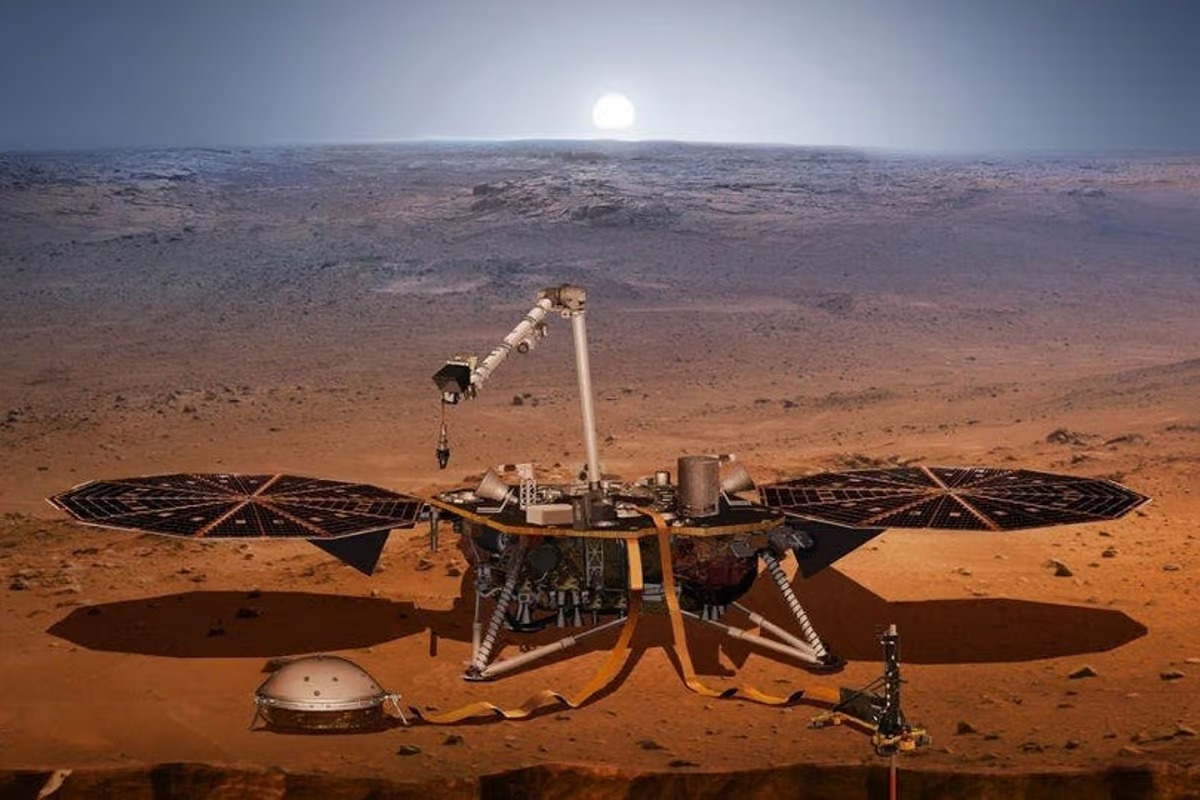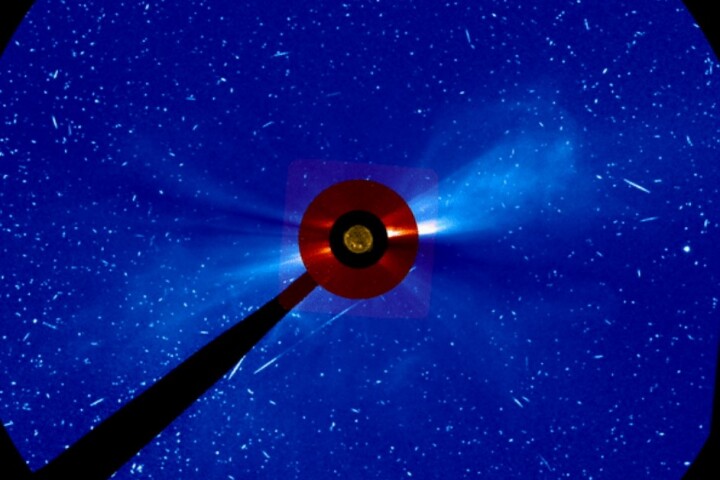 Data from NASA’s Mars Insight lander have revealed that days on the Red Planet are getting shorter every year. NASA
Data from NASA’s Mars Insight lander have revealed that days on the Red Planet are getting shorter every year. NASA
–
InSight was a probe that performed science experiments on Mars from 2018 until its solar panels became too caked in dust and it ran out of juice in December 2022. Its main goal was to study the interior of the Red Planet, but it also packed a pair of radio antennas that could help measure the rotation of Mars.
These antennas would communicate with NASA’s Deep Space Network, a system of facilities here on Earth. As they received the signals over the days and years, they could measure the stretching and shortening of the radio waves, as the rotating planet moved the lander towards and then away from Earth. This is the Doppler effect, most evident in the classic example of an ambulance siren sounding higher-pitched as it approaches you than it does moving away from you.
The team examined data gathered during InSight’s first 900 Martian days, and corrected for other factors like solar wind and moisture in Earth’s atmosphere. From this, the scientists could search for variations that were purely attributable to changes in the speed of Mars’ rotation.
“What we’re looking for are variations that are just a few tens of centimeters over the course of a Martian year,” said Sebastien Le Maistre, lead author of the study. “It takes a very long time and a lot of data to accumulate before we can even see these variations.”
After doing so, the researchers were able to detect that Mars’ rotation is speeding up, albeit by a very tiny amount – 4 milliarcseconds per year, which in turn makes the Martian day a few fractions of a millisecond shorter every year.
Exactly why the planet is speeding up remains unknown for now. Our Moon plays a major role in the rotation speed of Earth, and it’s actually making our days ever-so-slightly longer. But Mars’ two moons are much smaller and don’t seem to be the culprits. Instead, the scientists suggest that it could be caused by shifting mass from ice gathering on the polar caps, or landmasses springing back up after being covered with glaciers.
The data can also help scientists measure how much Mars is wobbling around as it spins, which is caused by the sloshing liquid in its core. From this, they were able to make an estimate of the core’s shape and radius – between 1,112 and 1,150 miles (1,790 and 1,850 km).
Although InSight is no longer gathering data, scientists will continue poring over the treasure trove it’s already collected for years to come.
The research was published in the journal Nature. The method used to measure the changing rotation speed is explained in the video below.
–
Source: NASA
–























